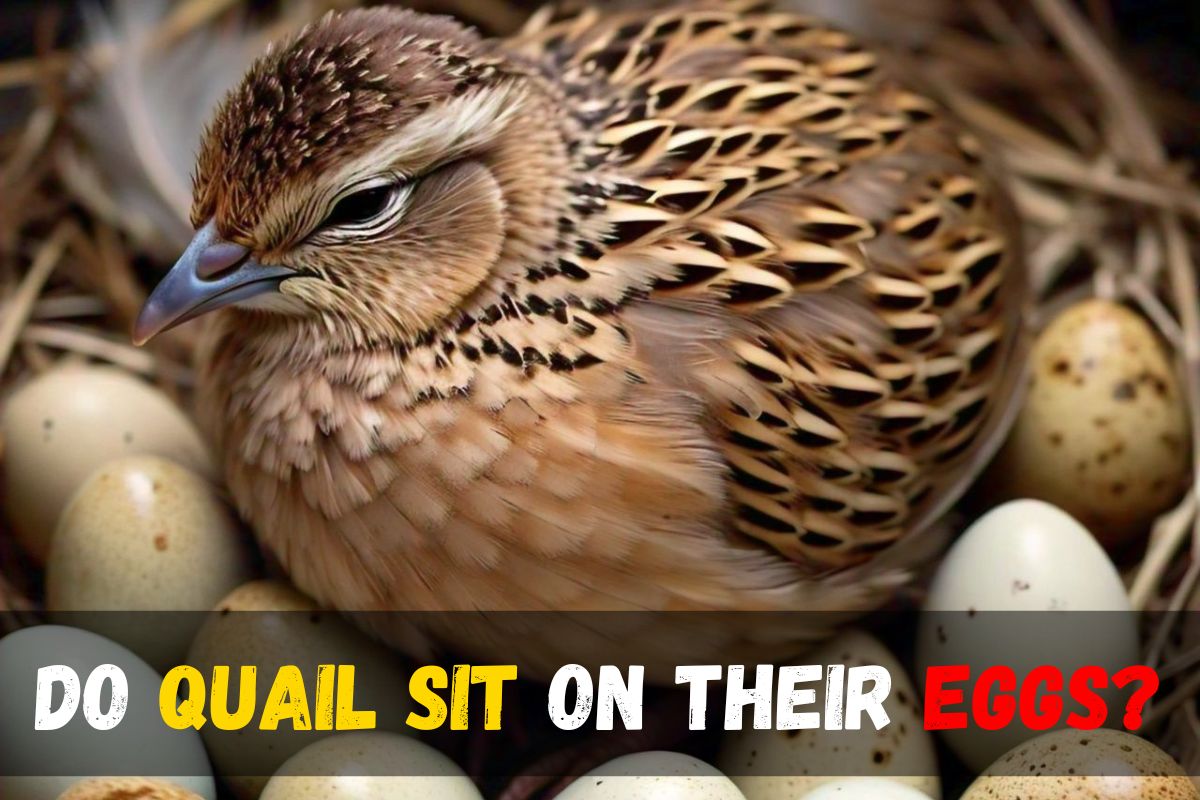Do quail sit on their eggs?
Yes, quail do sit on their eggs during the incubation process. This behavior is essential for the successful development and hatching of fertilized eggs. The process involves maintaining a consistent temperature of around 100 degrees, which is crucial for the embryonic membranes and overall egg development. Quail, like many other bird species, turn their eggs regularly to ensure even heat distribution and to prevent membranes from sticking to the inside of the shell.
During the breeding season, female quail experiences a unique adaptation known as a brood patch. This patch, located on their underbelly, plays a vital role in transferring the bird’s body heat to the eggs, facilitating incubation. The natural internal regulator within the brood patch also communicates with the mother bird, informing her about the duration and frequency of sitting on the eggs. As the incubation period progresses, the regulator guides the mother quail in adjusting her behavior, indicating when to take brief breaks from the nest.
Do Quail Mate for Life?
Interestingly, even wild male mountain quail have been observed developing brood patches, especially when their mates are unable to fulfill their incubation duties, such as in cases where the mother bird has been killed. Studies, like one conducted in California, have found that while most quail broods are typically raised by a single adult bird, those raised by two adults tend to be larger. This suggests a collaborative effort in incubation, emphasizing the significance of this behavior in the reproductive success of quail populations.
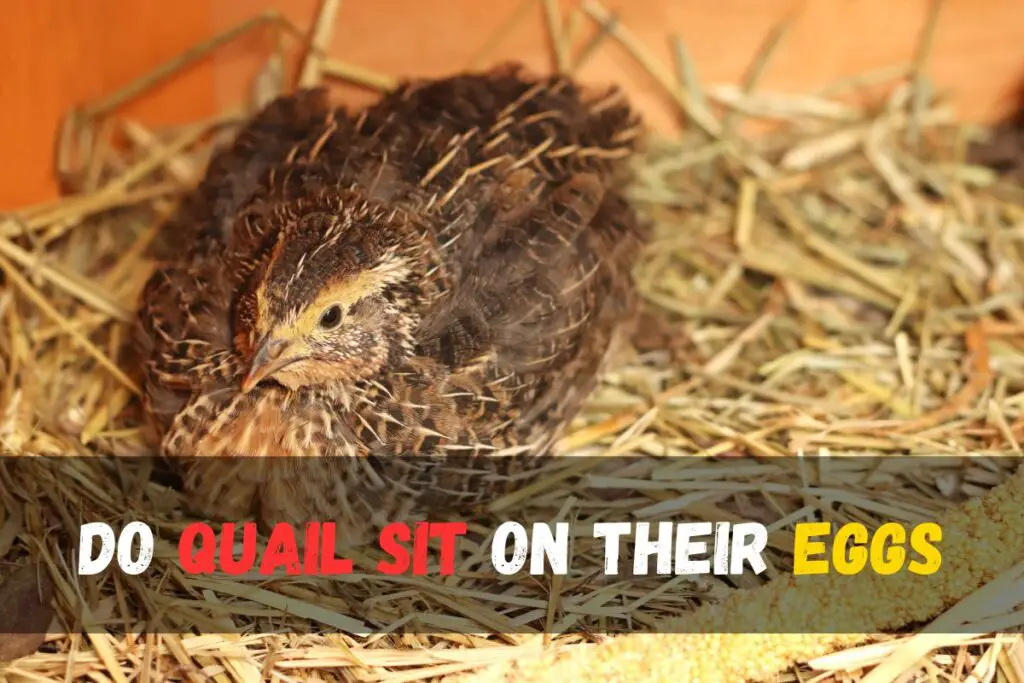
How Many Eggs Do Quail Lay?
Quail are fascinating birds with approximately 130 different species. The number of eggs they lay in each clutch varies based on the individual species, typically ranging from five to fifteen eggs. Interestingly, some nests have been discovered with as many as 28 eggs. It’s worth noting that two females may share a nest, and sometimes, a female might lay eggs in another nest alongside her own, a behavior known as “egg dumping.”
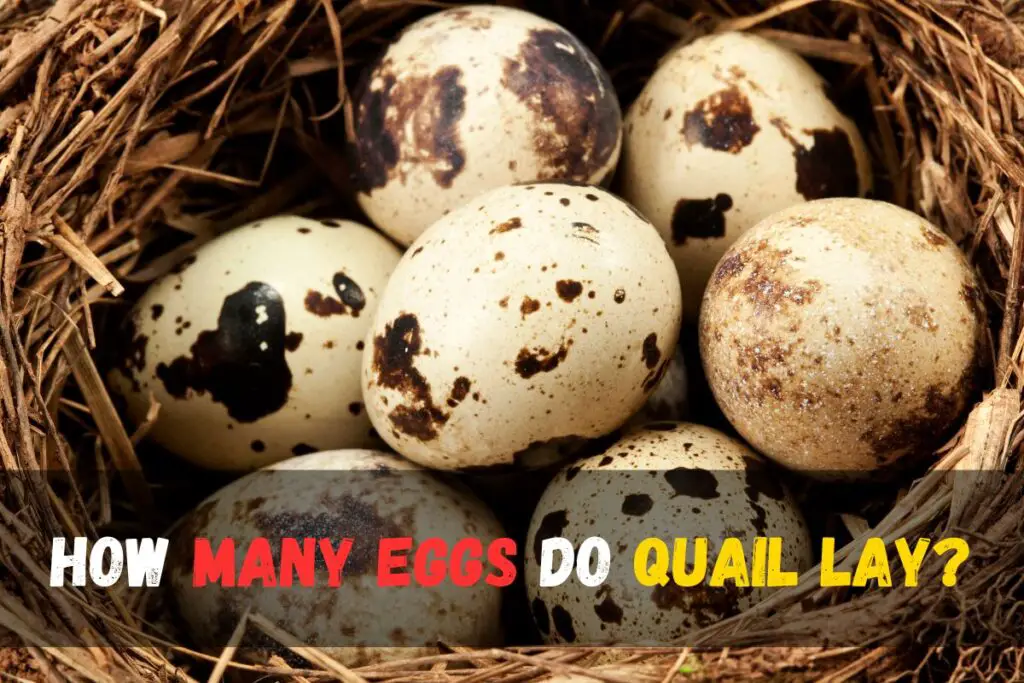
During the laying process, the mother diligently lays one egg each day until her clutch is complete. Surprisingly, the eggs remain dormant without any development until the last egg is laid. Only then does the mother quail stay in the nest to begin incubating, ensuring that her entire brood hatches simultaneously.
Do Quails Make Good Pets?
The incubation period for quail lasts approximately 21 to 31 days, depending on the species. This careful incubation strategy is quite distinct from that of chickens, which have a shorter incubation period of about 21 days.
Where Do Quail Make Their Nests?
Quail, a diverse group of bird species, exhibits a fascinating nesting behavior. These birds meticulously construct their nests on the ground, seeking refuge under dense cover. They display a resourceful approach, often scratching out depressions beneath tall grasses, against rocks, or beneath the scrub brush. The dimensions of their nests are noteworthy, typically around 1-1/2 inches deep and 5 to 7 inches in diameter.
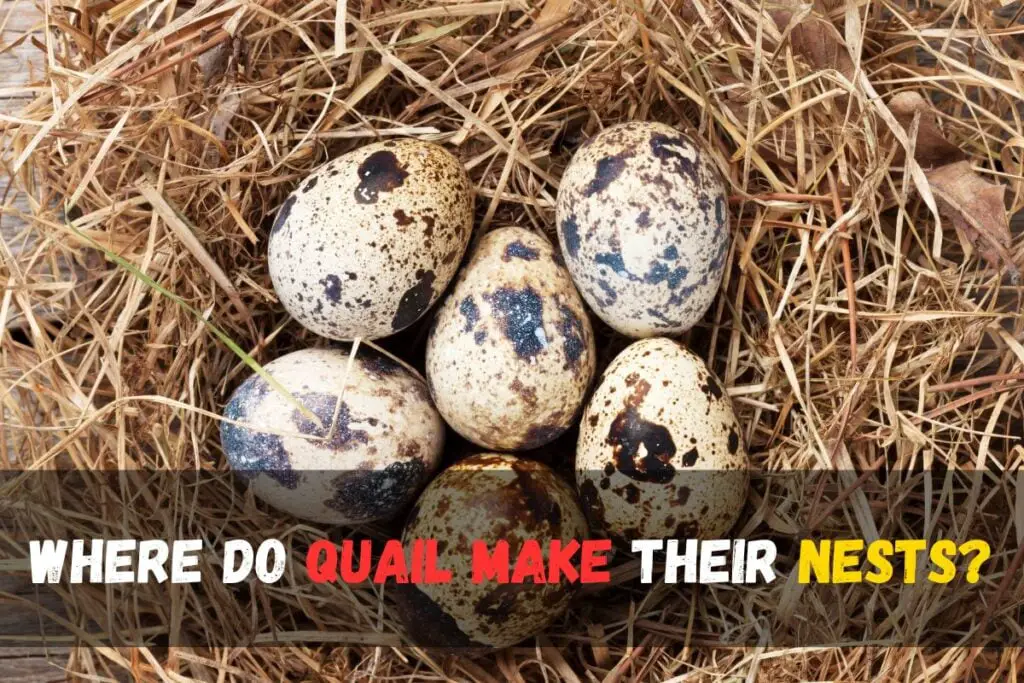
What makes these nests distinct are the quail eggs they cradle. Measuring about 1-1/2 inches in length and 1 inch in width, these eggs showcase a light brown or creamy tan hue adorned with assorted speckles and spots.
How Do Quail Protect Their Eggs from Predators?
Quail employ a fascinating array of strategies to safeguard their eggs from a myriad of predators. Natural threats such as foxes, opossums, raccoons, hawks, owls, and snakes pose a constant danger to these game birds, making protection a critical aspect of their survival. Despite their attempts to conceal themselves in dense cover, quail face a notably high mortality rate.
Can Quail Live With Chickens?
A noteworthy 2012 study, led by the esteemed vision scientist George Lovell from the universities of St. Andrews and Abertay in Scotland, delved into the protective mechanisms of quail. The study revealed an intriguing aspect of quail behavior in controlled environments. Female quail exhibited a remarkable diversity in the appearance of their eggs, with some consistently featuring large dark splotches while others had lightly flecked eggs.
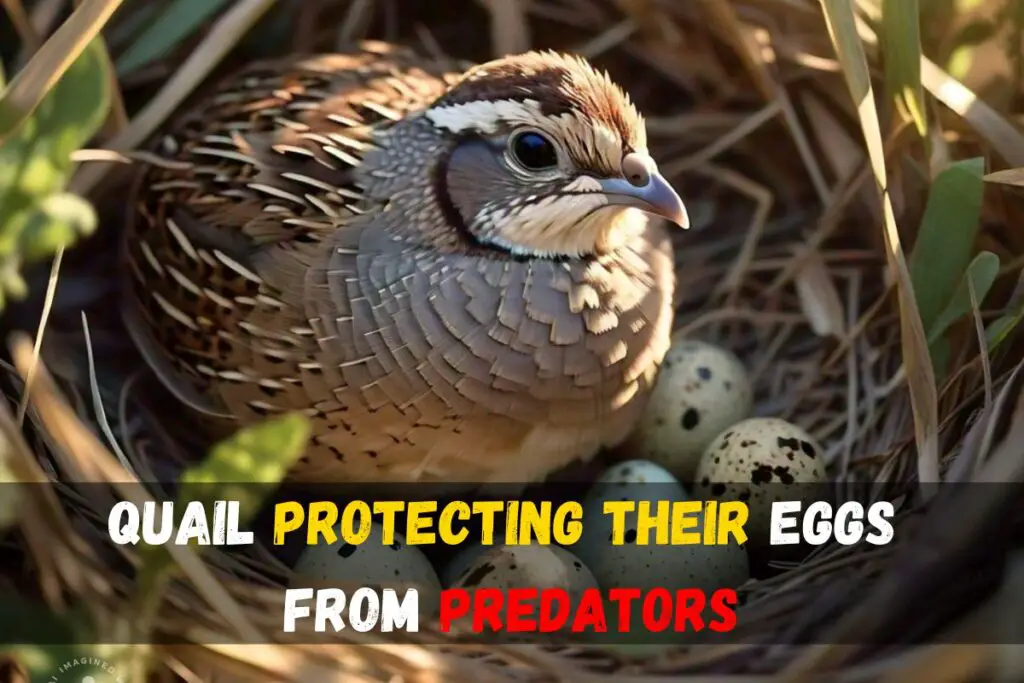
The scientists hypothesized that quail might make deliberate choices in selecting where to lay their eggs based on their distinct appearances. To test this, various colored sands were introduced in an aviary setting, mimicking the natural environment. The observations showed that, in most cases, females opted to lay their eggs on sands that provided the best camouflage. This behavior, akin to disruptive coloration observed in the wild, allows the birds to protect their eggs by disrupting the visual outline.
How Do Quail Develop During Incubation?
During incubation, quail undergo a fascinating developmental process. Quail chicks belong to the precocial category, which means they are born with a downy coat of feathers and their eyes wide open. Unlike altricial birds, quail chicks are capable of feeding themselves right from the start. Shortly after hatching, these chicks exhibit remarkable agility, being able to run around within hours. Their rapid development during this early stage allows them to be ready to leave the nest in just a matter of days.
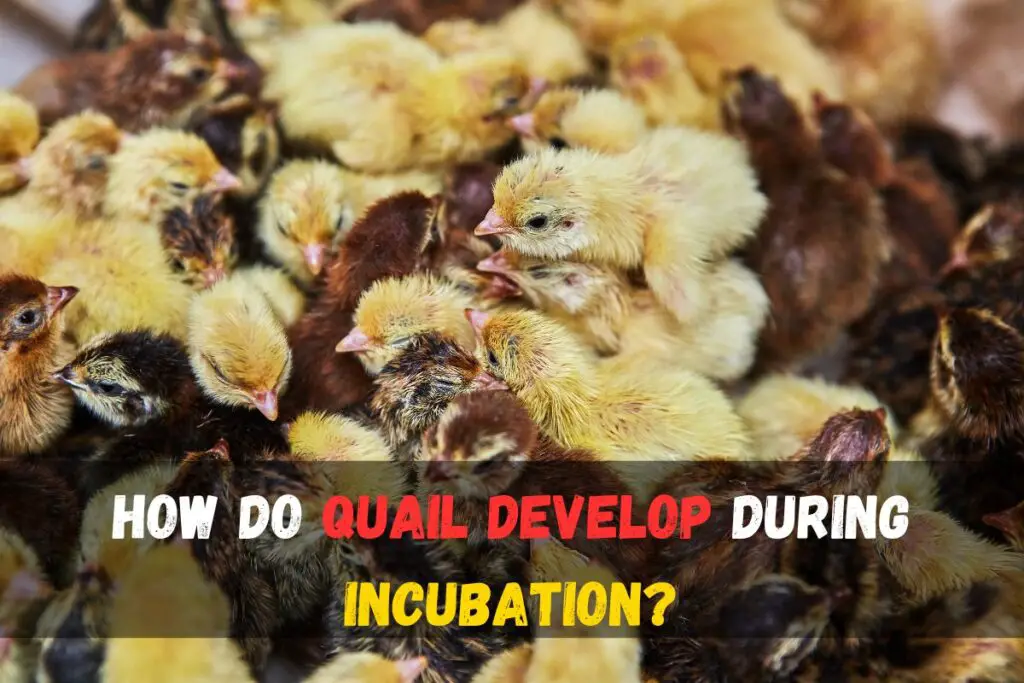
The incubation period for quail involves nurturing conditions that enable the development of these precocial characteristics. The eggs are carefully tended to, ensuring the chicks emerge with the necessary features for independence. It’s noteworthy that, unlike altricial birds whose dependency on parents continues for an extended period, quail development slows substantially after the initial burst of growth following hatching. This unique pattern of development aligns with the precocial nature of quail chicks, marking a distinctive phase in their life cycle.
How long after hatching do quail leave the nest?
Quail chicks, being precocial, are quick learners in the art of independence. Shortly after hatching, typically within a matter of days, these nimble youngsters are ready to leave the nest. Their rapid development allows them to explore their surroundings and embark on the next phase of their journey. This quick departure aligns with the precocial nature of quail, emphasizing their early self-sufficiency and agility.
How can one determine the viability of quail eggs?
Determining the viability of quail eggs requires a keen eye and careful observation. One key indicator of egg viability is candling. Candling involves passing a bright light through the egg in a darkened room. This process allows you to observe the contents of the egg and identify crucial signs of life.
When candling quail eggs, look for well-defined veins and a visible embryo. A live quail embryo will exhibit movement, often seen as small, subtle shifts within the egg. Additionally, the presence of blood vessels in a network-like pattern is a positive indication of vitality.
Can Quail Eat Chicken Feed?
On the contrary, if an egg appears uniformly clear or lacks distinct structures, it may be infertile or nonviable. Candling is a valuable method to assess the developmental progress of quail eggs and ensure a successful hatching process.
What is the temperature for hatching quail eggs?
The optimal temperature for hatching quail eggs is a critical factor in ensuring a successful incubation process. Quails require a consistent and controlled environment, with the ideal temperature range typically falling between 99.5 to 100 degrees Fahrenheit (37.5 to 37.8 degrees Celsius). Maintaining this specific temperature is crucial to support the proper development of the embryos within the quail eggs.
A precise and stable temperature is vital throughout the incubation period, which typically lasts around 17 to 18 days for most quail species. Deviations from this temperature range can negatively impact the hatching success, leading to abnormalities or even failure in the hatching process. Therefore, meticulous attention to maintaining the recommended temperature is essential for creating the optimal conditions conducive to the healthy development of quail embryos during incubation.
What day do quail eggs start moving?
Quail eggs typically start showing signs of movement, often referred to as “quivering” or “twitching,” around the 14th to 16th day of the incubation period. This movement is indicative of the developing embryos becoming more active inside the eggs. Observing this subtle but significant motion serves as an exciting milestone for those involved in the incubation process, signaling the nearing conclusion of the incubation period and the imminent hatching of quail chicks.
What occurs when eggs do not hatch within the 21-day timeframe?
If quail eggs do not hatch within the standard incubation period of 21 days, several potential issues may be at play. It’s crucial to assess and understand the reasons behind the delayed hatching:
- Infertility: Unfertilized eggs won’t hatch. Confirming fertility before incubation through candling or other methods is essential.
- Temperature Fluctuations: Inconsistent or incorrect incubation temperatures can impact embryo development. Fluctuations may lead to delayed hatching or even complete failure.
- Humidity Levels: Inadequate humidity during incubation can cause chicks to become “shrink-wrapped” in the egg, making it difficult for them to hatch.
- Poor Egg Handling: Rough handling, improper storage, or positioning of eggs during incubation may interfere with embryo development.
- Genetic Factors: Genetic abnormalities or issues with the breeding stock can contribute to unsuccessful hatching.
- Bacterial Contamination: Infections in the eggs can hinder embryo development and lead to unsuccessful hatching.
If eggs haven’t hatched after 21 days, carefully assess these factors. Candling the eggs to check for signs of life or consulting with experienced breeders can provide valuable insights. It’s essential to address any underlying issues promptly to enhance future incubation success.
How old do quails live?
Quails generally have a relatively short lifespan in the wild. On average, their life expectancy ranges from 1 to 2 years. However, in captivity under favorable conditions with proper care, quails may live slightly longer, reaching up to 3 to 4 years. Various factors, including habitat, predation risks, and availability of resources, influence the lifespan of quails in their natural environment. In captivity, providing a suitable and secure environment can contribute to extending their lifespan beyond what they might experience in the wild.
Can eggs hatch on day 25?
No, it is highly unlikely for quail eggs to hatch on day 25. The typical incubation period for quail eggs ranges from 17 to 18 days. If the eggs have not hatched by day 25, it is a strong indication that something might be amiss in the incubation process. It’s crucial to monitor and maintain the appropriate temperature and humidity levels consistently throughout the incubation period to ensure the healthy development of quail embryos. Deviations from the standard incubation timeframe may result in decreased hatching success or abnormalities in the chicks. If there are concerns about delayed hatching, it is advisable to assess and adjust the incubation conditions accordingly.
Do quails need males to lay eggs?
Yes, quails, like many bird species, require males for the process of laying eggs. In the case of quails, both male and female birds are essential for reproduction. The female quail is responsible for laying the eggs, while the male quail plays a vital role in fertilizing those eggs.
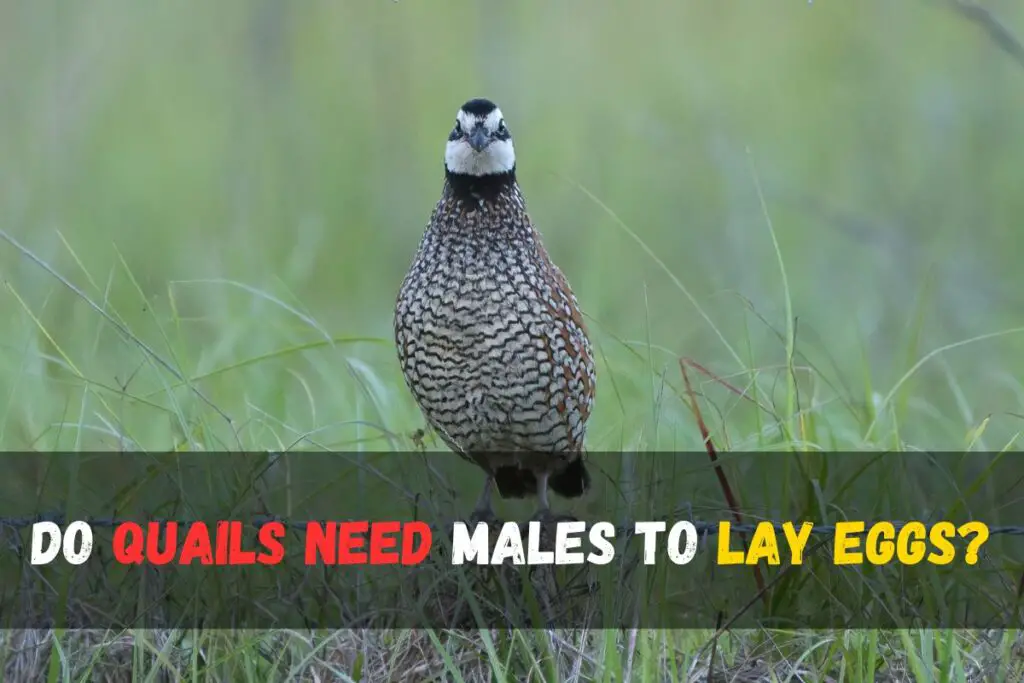
Female quails have the reproductive system to produce eggs regardless of whether they have mated with a male. However, for the eggs to develop into viable embryos, they need to be fertilized by the sperm from a male quail. Therefore, the presence of both male and female quails is necessary for the successful production of fertilized eggs and the continuation of the quail life cycle.
How fast does baby quail grow?
The growth rate of baby quail is quite remarkable. In their early days, baby quail experience rapid development. They can start running around just hours after hatching, showcasing impressive agility. Within a matter of days, these precocial chicks are ready to leave the nest, emphasizing their swift progression toward independence.
However, it’s important to note that while the initial growth is rapid, the pace of development slows considerably after hatching. The early burst of activity is a unique characteristic of precocial birds like quail, highlighting their ability to quickly adapt to their environment and become self-sufficient in a relatively short period.
Do quail return to the nest after hatching?
Unlike some bird species, quails typically do not return to the nest after hatching. Once the quail chicks have hatched, they quickly become mobile and independent. The mother quail’s primary role is to lead and guide her newly hatched chicks, teaching them essential skills for survival, such as finding food and avoiding predators. The nest is generally abandoned after the hatching process, as the focus shifts to the active care and protection of the chicks outside the nest environment.
FAQ’S
Do quails hide their eggs?
Yes, quails are known for their tendency to hide their eggs. Quails are ground-nesting birds, and the female quail typically creates a shallow depression in the ground, known as a scrape, where she lays her eggs. This scrape is often well-hidden among vegetation or tall grass to provide some level of protection and camouflage for the eggs.
The purpose of this behavior is to safeguard the eggs from potential predators. By concealing the eggs in a carefully chosen and hidden location, quails reduce the risk of their eggs being easily discovered and preyed upon by animals that might pose a threat to their survival. This instinct to hide their eggs is a survival strategy employed by many bird species, including quails.
Why are my quail eating their eggs?
The phenomenon of quail eating their eggs, known as egg-eating behavior, can be attributed to various factors. Understanding and addressing these factors are crucial in managing and preventing this undesirable behavior.
- Nutritional Deficiency: Quail may resort to eating their eggs if they lack essential nutrients in their diet, particularly calcium. Ensuring that the quails receive a well-balanced diet with adequate calcium can help mitigate this behavior.
- Overcrowding: In overcrowded living conditions, quail may become stressed, leading to abnormal behaviors such as egg-eating. Providing sufficient space and a stress-free environment can reduce the likelihood of this behavior.
- Boredom or Lack of Stimulation: Quail, like many birds, may engage in undesirable behaviors out of boredom. Ensuring that the quail has an enriched environment with opportunities for mental and physical stimulation can discourage egg-eating.
- Incorrect Nesting Conditions: If the nesting area is not suitable or comfortable, quail may accidentally break eggs or develop the habit of eating them. Providing well-designed nesting boxes with appropriate nesting materials can prevent this.
- Genetic Predisposition: Some quail may have a genetic predisposition to egg-eating behavior. In such cases, selective breeding for birds that do not exhibit this behavior can be considered.
- Prompt Egg Collection: Regular and prompt collection of eggs can help break the habit. If quails don’t find eggs in the nest, they are less likely to develop the habit of eating them.
- Isolation of Egg Eaters: If a specific quail is consistently engaging in egg-eating behavior, isolating that individual temporarily may prevent the behavior from spreading to others in the flock.
Why do quails not lay eggs?
Several factors can contribute to quails not laying eggs. Here are some common reasons:
- Age of Quails: Quails typically start laying eggs when they reach maturity, which is around 6 to 8 weeks of age for most species. If your quails are still young, they may not have reached the age of reproductive maturity.
- Dietary Issues: The nutritional needs of quails are crucial for egg production. If they are not receiving a well-balanced and adequate diet, it can affect their reproductive capabilities. Ensure that the quails are getting proper nutrition, including sufficient calcium for eggshell formation.
- Stress and Environment: Quails are sensitive to their environment, and stress can adversely impact their egg-laying behavior. Factors such as overcrowding, sudden changes, or the presence of predators can stress quails and disrupt their egg-laying routine.
- Photoperiod and Light Exposure: Quails, like many birds, are influenced by the length of daylight. They often require a certain number of daylight hours to stimulate the reproductive hormones responsible for egg production. Ensure that they receive an appropriate photoperiod, either through natural sunlight or artificial lighting.
- Health Issues: Diseases, parasites, or underlying health problems can affect a quail’s ability to lay eggs. Regular health checks and appropriate veterinary care are essential to rule out health issues.
- Breeding Season: Quails, depending on the species, may have specific breeding seasons. If it’s not the right time of the year, they may naturally reduce or cease egg-laying.
How can one distinguish between a male and a female quail?
Differentiating between male and female quails entails examining particular physical traits and behaviors of the primary indicators is the plumage, as males and females often exhibit different colorations. In many quail species, males tend to have more vibrant and contrasting plumage, often featuring distinctive markings or brighter colors, while females may have more subdued and camouflaged patterns.
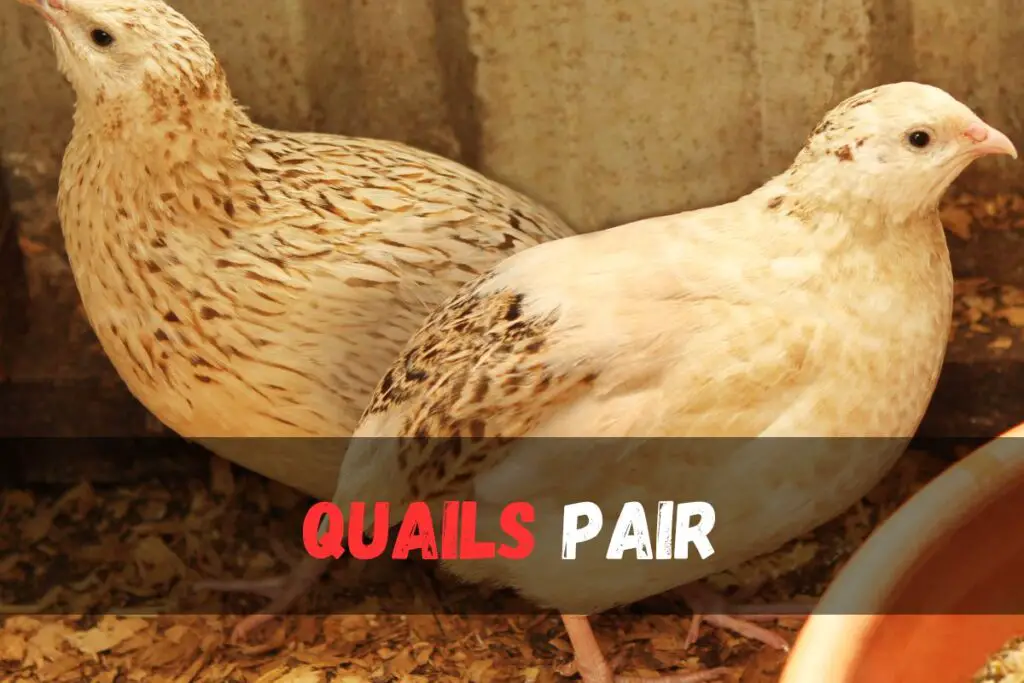
Additionally, examining the size and shape of the bird can provide clues; males may be slightly larger with a more pronounced neck or chest. Behavioral cues also play a role, especially during the breeding season. Males typically engage in more pronounced courtship displays, including calls and dances, to attract females. In some cases, such as with the Coturnix quail, males may have a more pronounced cloacal gland, a gland near the tail used in scent marking, which is absent or less noticeable in females. Combining these visual and behavioral indicators can assist in accurately determining the gender of quails in a given flock.

